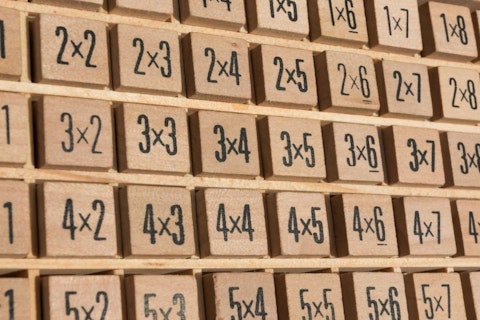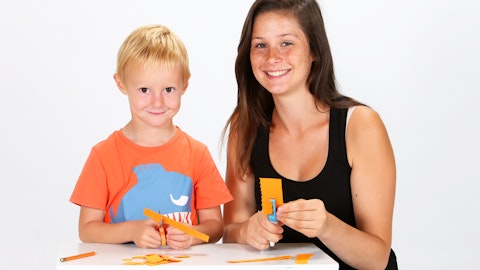The math standards issued by the Common Core State Standards Initiative have made life easier for innumerable teachers, and this compilation of common core multiplication strategies for 3rd and 4th graders will serve to further assist educators and students alike.
The Common Core State Standards Initiative aims to regulate mathematics for students of all ages throughout the nation. Providing a very specific guideline from kindergarten to grade 12, the standards have greatly assisted schools in knowing what level of knowledge and skill a student should possess at a particular point in time. In addition to this uniformity, the initiative focuses on quality as well. It has taken measures to extinguish the false belief among citizens that the standards cater to the below average pupil only, causing a decline in the quality of education. The truth is that they have been designed to further strengthen the minds of students, in order to enable them to solve mathematical problems in innovative ways. After all, its objective is to “prepare America’s students for college and career.”

Copyright: Prometeus / 123RF Stock Photo
There are still eight states in the country that have refused to adopt these common core multiplication strategies for 3rd and 4th graders: Texas, Alaska, Oklahoma, Virginia, Nebraska, Minnesota, South Carolina and Indiana. The rest of the states have embraced the standards at various instances during the past few years, and it’s only a matter of time before the other ones decide to regularize their systems too.
The common core math standards outline the entire course for a grade, but today multiplication is our main focus. I think we all remember how demanding multiplication used to seem at the age of ten, especially those pesky questions involving double-digit numbers. Honestly (embarrassingly), some of us still don’t get the hang of it. But don’t give up on your multiplication skills just yet.
Perusing the standards, I came across various strategies that the initiative has recommended that would not only create an understanding of the multiplication operation among the minds of the students but also aid them in performing calculations. So before you start considering one of these 15 Best Careers if You Are Bad at Math, let me list down some common core multiplication strategies for 3rd and 4th graders to help you out. Don’t forget, these are great if you are a teacher having a hard time getting your students to truly comprehend how to multiply numbers.
3rd Grade
Third grade is when the concept of multiplication is first introduced. Therefore, the tips and tricks are quite basic in nature but are also extremely effective, especially to provide students with a concrete concept. Since students should know by heart products of single digit numbers by the time they pass the third grade, all these common core multiplication strategies for 3rd and 4th graders are designed to do just that. Let’s look through them, shall we?
Equal Groups
Using equal groups is the easiest and simplest way for students to initially grasp what multiplication entails. You can explain the method by using interesting items to make groups of equal numbers. For example, if you have, say gummy bears, assemble five of them in a single group until you have four groups, each containing five gummy bears, so you end up with “4 groups of 5”, which can then be written as “4 x 5”. Then ask your students to count all the gummy bears or add 5 four times, to get the answer 20. Quick and easy!
Rectangular Arrays
Using rectangular arrays is another method on our list of common core multiplication strategies for 3rd and 4th graders. It is quite similar to the one I explained above, except in this you draw rectangular arrays of dots, so 4 arrays of 5 dots each if we continue the example above. This method makes things more systematic and orderly for students who like a clean approach. The video below might help in clarifying the idea.
Word Problems
Using word problems to employ the two strategies above is a great way to engage students’ minds and really drill in the common core multiplication strategies for 3rd and 4th graders. Word problems are also the most effective method for creative students to develop their interest in math and make the class fun. For example, if a word problem asks the reader to calculate the number of petals in 6 flowers with each flower having 5 petals, students may be asked to use equal groups by drawing flowers. It’s a fun little art class along with a lesson in math.

Copyright: romrodinka / 123RF Stock Photo
Multiplication Properties
Using properties of operations to teach multiplication is another one of the common core multiplication strategies for 3rd and 4th graders. What exactly are the properties of multiplication? Let’s go through them one by one.
Commutative property of multiplication teaches us that if you know what “5 x 7” is, then you don’t have to sweat it to try to remember “7 x 5”. It’s the same thing i.e. “5 x 7 = 7 x 5”.
Associative property of multiplication explains that numbers can be multiplied in any order. For example, if it’s “2 x 3 x 4”, you can either calculate “2 x 3” first and then multiply it by 4, or you can calculate “3 x 4” and then multiply it by 2. Therefore, “(2 x 3) x 4 = 2 x (3 x 4)
Distributive property of multiplication instructs us on how to break up a number and use our addition skills instead of our less prevalent multiplication skills. For example, if 9 x 9 sounds too difficult, it can be rewritten as “9 x (5 + 4)” and then be solved like this: “9 x (5 + 4) = (9 x 5) + (9 x 4)”

Copyright: giorgiorossi73 / 123RF Stock Photo
Determining the Unknown
Another constructive method to help children memorize single digit products is giving them equations where one number, which is represented by a symbol, is to be determined. For example, ” 4 x 3 = *”, “4 x * = 12″, ” * X 3 = 12″. This exercise should be performed when a child has become well-versed with the concept of multiplication but is having a hard time retaining time tables.

Copyright: djedzura / 123RF Stock Photo
4th grade
All the common core multiplication strategies for 3rd and 4th graders that have been enlisted above can be used for fourth grade as well, therefore we have not mentioned them again. They can be molded for more advanced questions as the teacher sees fit. Below are the methods that are exclusively for 4th grade, when double digit multiplication is first introduced to children.
Area Models
Multiplication of double digit numbers with double digit numbers is always a hassle. The area model technique is designed to make it easier, faster and generally more doable. Let’s take an example. Consider “35 x 43”. Sounds difficult, doesn’t it? Not with the area model. First, you break up the two numbers into tens and units, i.e. 35 can be fragmented into 30 and 5 and 43 into 40 and 3. Second, draw a square and divide it into four equal parts. Write the two figures representing the first number (30 and 5) on the top of the square, one on top of each divided part, while the corresponding figures for the second number will go on the left of the square. Third, multiply each number on the top with each number on the left. In this case, multiply 30 with 40 and 3, and multiply 5 with 40 and 3. The four products will take their places inside each part of the square and will finally be added to come up with the final answer. For those of you who would like a video representation, refer the video below.
Multiplicative Comparison
We wrap up our list of common core multiplication strategies for 3rd and 4th graders with a simple multiplicative comparison, i.e. when a figure is represented in terms of another figure. For example, if John is three times as tall as Carl, his height has been explained in reference to Carl’s height, and therefore can be calculated by multiplying Carl’s height with three. This technique helps students understand the importance of multiplication in real life situations. It is a little confusing at first but with practice comes perfection!




